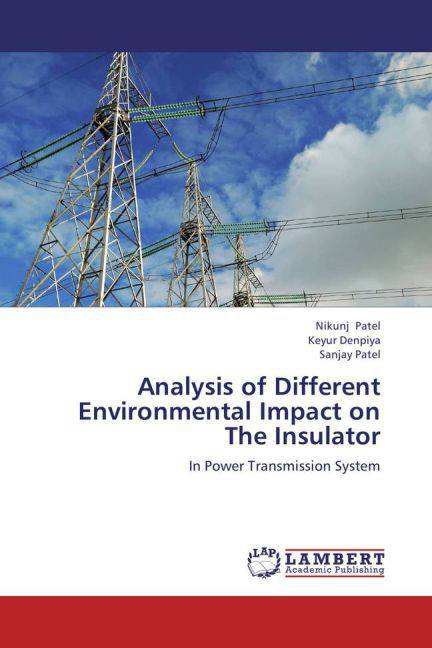
Je cadeautjes zeker op tijd in huis hebben voor de feestdagen? Kom langs in onze winkels en vind het perfecte geschenk!
- Afhalen na 1 uur in een winkel met voorraad
- Gratis thuislevering in België vanaf € 30
- Ruim aanbod met 7 miljoen producten
Je cadeautjes zeker op tijd in huis hebben voor de feestdagen? Kom langs in onze winkels en vind het perfecte geschenk!
- Afhalen na 1 uur in een winkel met voorraad
- Gratis thuislevering in België vanaf € 30
- Ruim aanbod met 7 miljoen producten
Zoeken
Analysis of Different Environmental Impact on The Insulator
In Power Transmission System
Nikunj Patel, Keyur Denpiya, Sanjay Patel
Paperback | Engels
€ 65,45
+ 130 punten
Omschrijving
In recent years, the demand of electric power has enlarged considerably. To satisfy this demand, electrical companies have to improve the efficiency of their transmission lines.The efficiency of the system is based mainly on the continuity of the service, avoiding fault that suppose economical losses for companies and users. To maintain this continuity one of the main problems that have been found is the effect produced by pollution on insulators of electric lines.All insulators, regardless of their material, are exposed to various electrical, mechanical and environmental stresses. The electrical stresses are the consequences of regular voltages and over voltages. The mechanical stresses are related to the presence of various loads, e.g. the weight of conductors and hardware, wind load, ice loads etc. The environmental stresses of prime importance are the many forms of precipitation and pollution.The performance of these high voltage ceramic and non-ceramic insulators is important for both dry and wet conditions. Long-term problems with them are related to the degradation of materials used for the insulators, corona phenomena on the insulator surface, and pollution flashover.
Specificaties
Betrokkenen
- Auteur(s):
- Uitgeverij:
Inhoud
- Aantal bladzijden:
- 92
- Taal:
- Engels
Eigenschappen
- Productcode (EAN):
- 9783659320859
- Verschijningsdatum:
- 11/01/2013
- Uitvoering:
- Paperback
- Afmetingen:
- 150 mm x 220 mm
- Gewicht:
- 145 g

Alleen bij Standaard Boekhandel
+ 130 punten op je klantenkaart van Standaard Boekhandel
Beoordelingen
We publiceren alleen reviews die voldoen aan de voorwaarden voor reviews. Bekijk onze voorwaarden voor reviews.









